The Western concept of time as linear and disconnected from natural and sociocultural contexts is increasingly being challenged. Most notoriously by non-Western worldviews that envision time as cyclical, multifaceted and interconnected with the environment. The linear concept of time also has to contend with artificial intelligence. AI programs were conceived to follow the Western model. They look to the past in order to interpret the present and, in the case of predictive programs, forecast the future. However, the evolution of society, the instability of contexts, the unpredictable and other uncomputable elements usually hinder the adequate functioning of this linear logic.
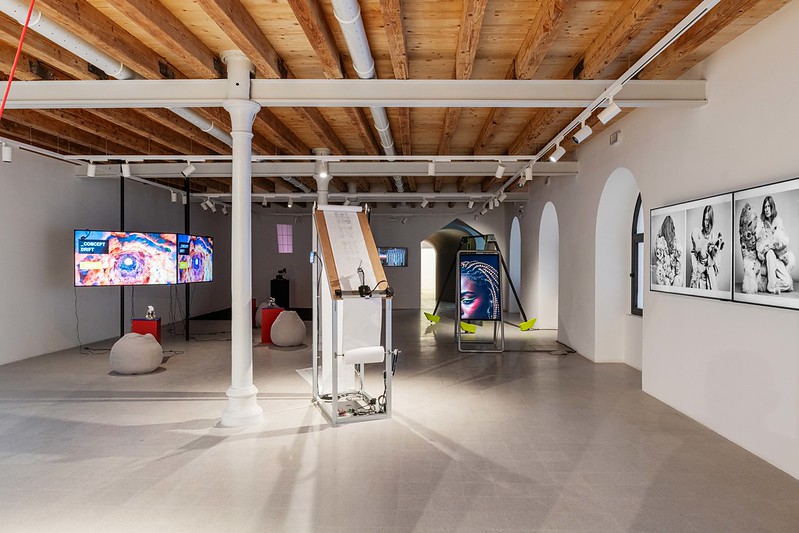
Timeline Shift, 2025. Installation view Re:humanism 4 at Fondazione Pastificio Cerere, Roma. Photo: Carlo Romano. Courtesy Re:humanism

Minne Atairu, DA BRAIDR, 2025
That’s precisely this impossibility to secure the essence of time that Timeline Shift, the fourth edition of the Re:humanism biennial, is exploring this year. The exhibition looks at time through the lenses of the colonial heritage of technology, the deconstruction of dominant value systems, the quest for inclusive and subjective technological models, and more.
The artworks selected for the show challenge the profit-driven paradigms that guide the development of AI. They suggest that complexity, resistance, unpredictability and friction can shape the future(s). It is precisely in the possibility of deviation that the human factor emerges, no longer as a central subject, but as an erratic node in a network of relationships.
I visited the show right after it opened at Fondazione Pastificio Cerere in Rome. It closed last week and SHAME ON ME!, it’s only now that i’ve found a moment to write about some of the works i found particularly interesting:

IOCOSE, AI-Ludd, 2025
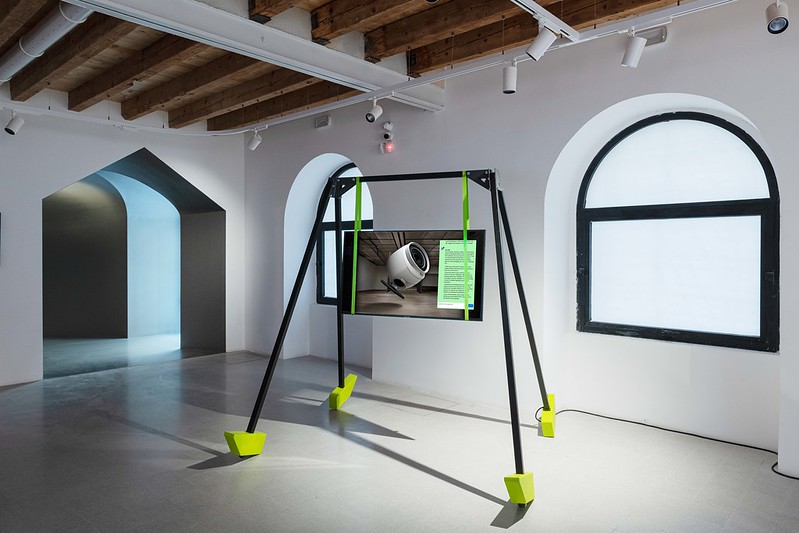
IOCOSE, AI-Ludd, 2025. Installation view Re:humanism 4 at Fondazione Pastificio Cerere, Roma. Photo: Carlo Romano. Courtesy Re:humanism 4
AI-Ludd follows the interactions between a Luddite chatbot and workers who are frustrated by their job. The dialogue is witty and entertaining. The chatbot hacks into the database of a company to redress an injustice, attempts to convince an overstressed worker to take it easy and resist capitalism or teaches the workers the best ways to sabotage the surveillance technologies used by their employers.
AI-Ludd is at odds with the propaganda and promises made by AI evangelists. The technology, we are told, will increase efficiency and productivity. Sadly, this optimisation often happens at the expense of the workers. Therefore, the main purpose of AI-Ludd is to give back some agency and dignity to humans. The chatbot was trained by Luddites to encourage workers to deceive bossware, disrupt automation, resist capitalist constraints and enjoy life. It takes a machine to tell us how much machines have enslaved us!
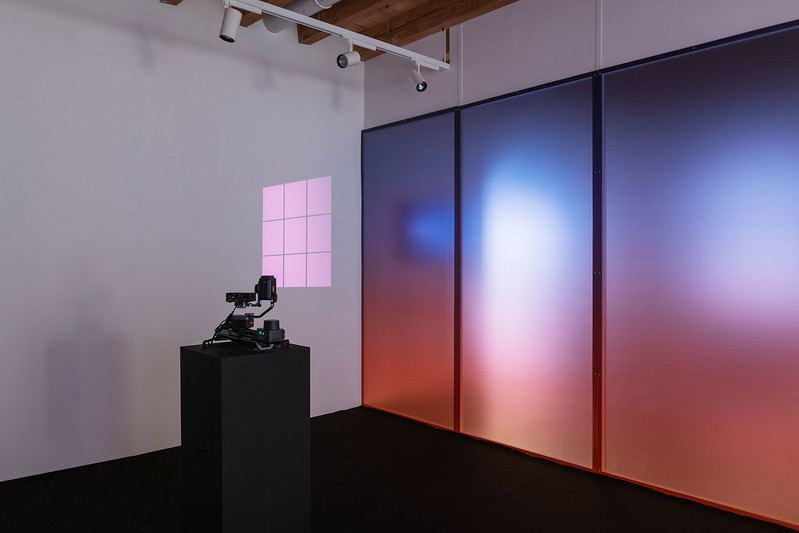
Isabel Merchante, One day I saw the sunset ten thousand times, 2025. Installation view Re:humanism 4 at Fondazione Pastificio Cerere, Roma. Photo: Carlo Romano. Courtesy Re:humanism 4
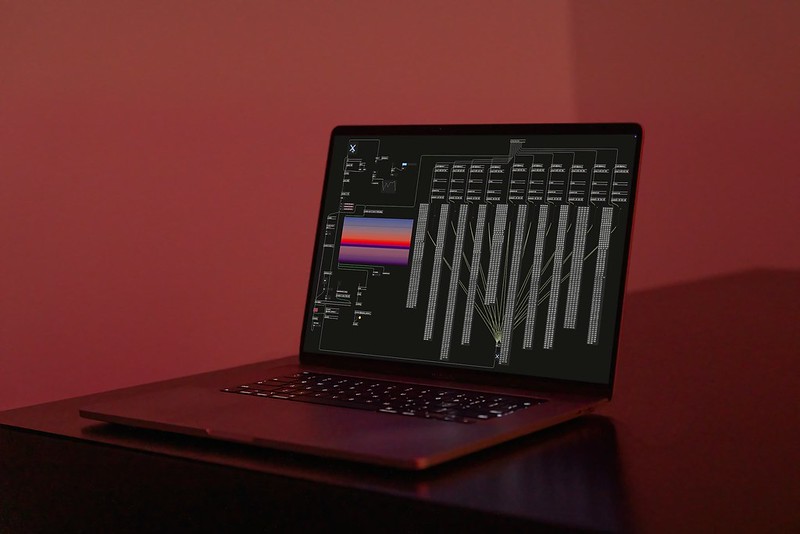
Isabel Merchante, One day I saw the sunset ten thousand times, 2025
Isabel Merchante’s installation also undermines the productivity of machines. She recontextualised an industrial robot into an “emotional” machine which only function is to observe AI-generated sunsets. The sunsets are created from millions of data points extracted from the internet. The robot projects the images in a cyclical choreography that simulates the path of a ray of light as it crosses a window along the day.
The robot doesn’t produce anything tangible or exploitable. It simply stands all day in front of a visual cliché. The algorithms guiding the work have no understanding of contemplation; they do not share the sense of awe and wonder many of us feel in front of a sunset; nor can they feel the warmth of the end of a sunny day. On the other hand, none of us will ever witness ten thousand sunsets in a single day. Neither the machine nor us can ever understand what the other experiences.
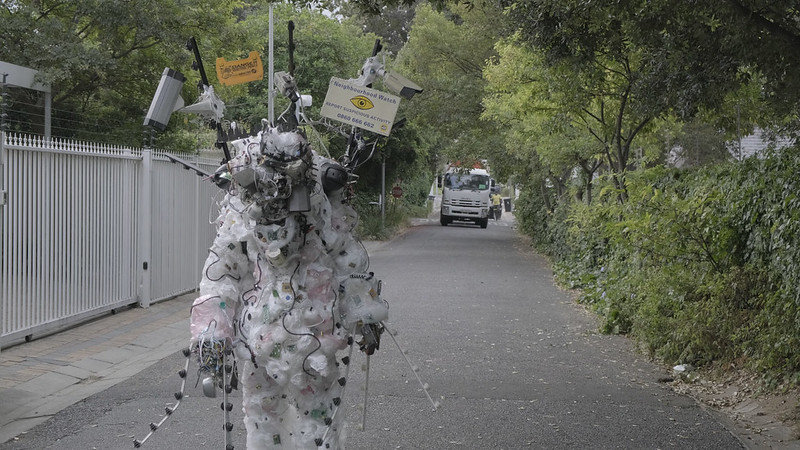
Lo-Def Film Factory, Concept Drift, 2025
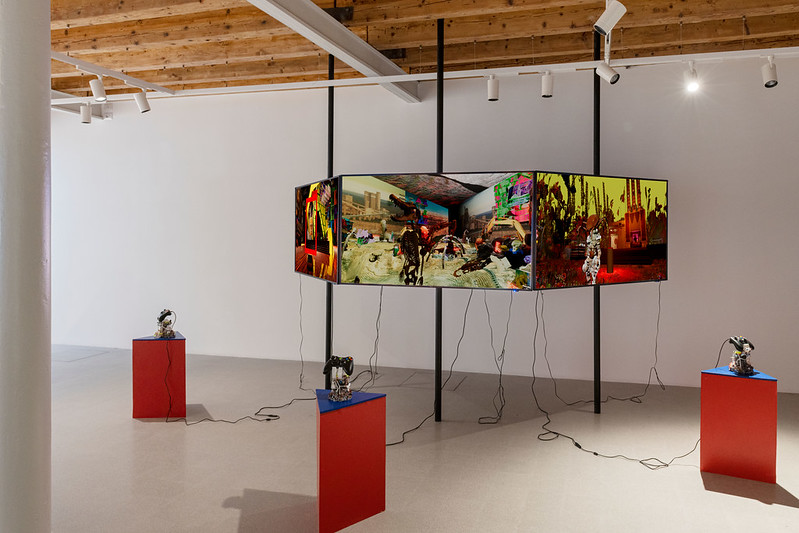
Lo-Def Film Factory, Concept Drift, 2025. Installation view Re:humanism 4 at Fondazione Pastificio Cerere, Roma. Photo: Carlo Romano. Courtesy Re:humanism 4
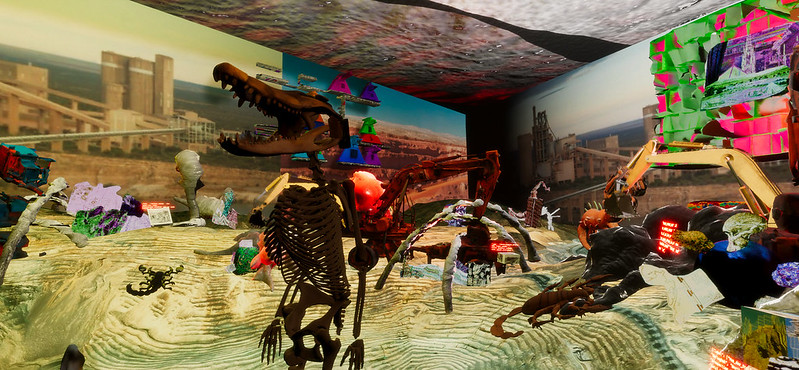
Lo-Def Film Factory, Concept Drift, 2025
Concept Drift is a videogame installation reflecting on the entanglement between knowledge production, colonial exploitation and technological power within the South African context.
The title draws from the technical term “drift” in machine learning, which refers to the moment when a predictive model, trained on historical data, becomes ineffective in the face of real-world conditions. As the environment changes, this data might differ from what the model has seen during training. As a result, the so-called data drift can make the model less accurate.
In Lo-Def Film Factory, the drift concept serves as a lens to interrogate the limitations of computational approaches to the world’s complexity. Through an assemblage of AI-generated 3D models, analogue collages, game-engine-built environments, archival materials and sculptural costumes, the work invites players to discover elements that are usually absent from AI databases, such as the colonial roots of AI and the extractivism its material infrastructure depends upon.
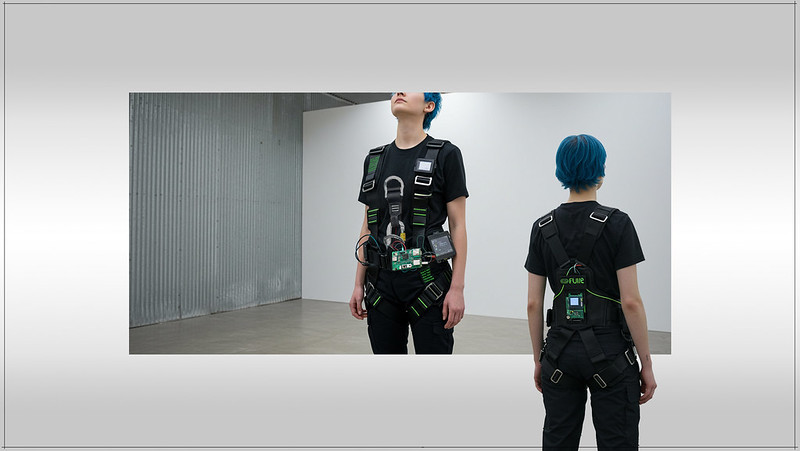
Federica Di Pietrantonio, Net Runner 01, 2025
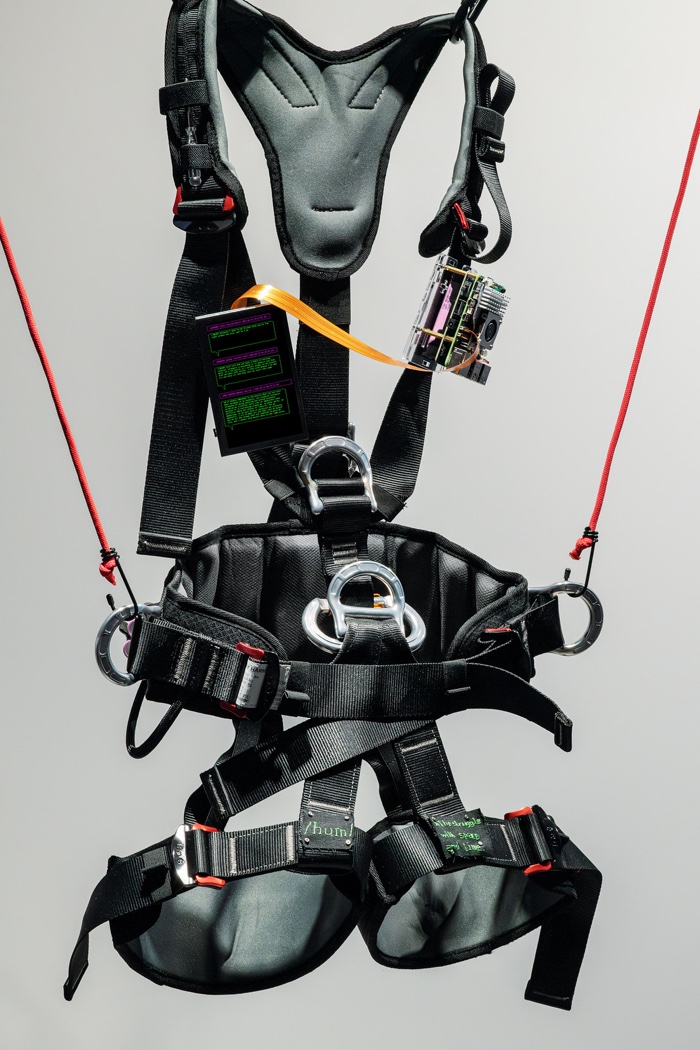
Federica Di Pietrantonio, Net Runner 01, 2025. Installation view Re:humanism 4 at Fondazione Pastificio Cerere, Roma. Photo: Carlo Romano. Courtesy Re:humanism 4
Federica Di Pietrantonio‘s Net Runner 01 safety harness looked fascinating. However, the description of the work was not ultra clear to me. But here’s a copy/paste: the harness was designed to prepare the wearer for a rapid and secure escape. Hardware components embedded into the fabric locally archives, in real time, the content of the /hum/ board on Lainchan.org, an imageboard dedicated to anonymous conversations on themes such as isolation, technology and identity.

Minne Atairu, DA BRAIDR, 2025
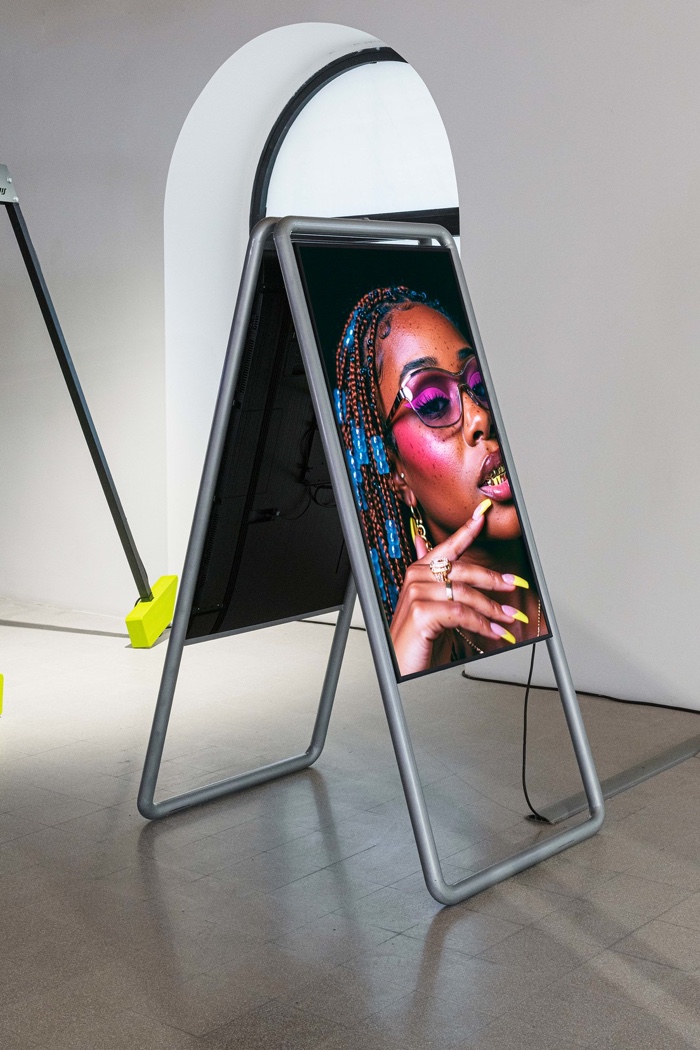
Minne Atairu, DA BRAIDR, 2025. Installation view Re:humanism 4 at Fondazione Pastificio Cerere, Roma. Photo: Carlo Romano. Courtesy Re:humanism 4
With Da Braidr, Minne Atairu imagines a conceptual start-up that uses AI to support the informal economy of Black hair braiding.
The first speculative product of the project is an AI system that generates customised braid styles while estimating the time, cost and labour required to produce them.
Far from being a vanity project, Da Braidr reminds us that braids are a socioeconomic investment made by the wearer. The braiding style has consequences in terms of visibility, respectability, employability and access to education and healthcare. Those who wear the braided crown must face critical questions such as, Will my chosen braid quietly or boldly defy the White, patriarchial gaze? Am I prepared to pay a premium for braids crafted with 100% virgin human hair, Donor Hair, Indian Hair, Mongolian hair, Brazilian hair, Bone straight hair – all prized precisely for their deviation from coily/curly hair? Or do I opt for a cheaper alternative: afro-synthetic fiber and, in doing so, risk exposure to carcinogens?
Within a beauty economy marked by systemic racialization, the project investigates the potential of generative AI as a strategic tool in the hands of Black women, one of the demographics most affected by AI’s racist biases.
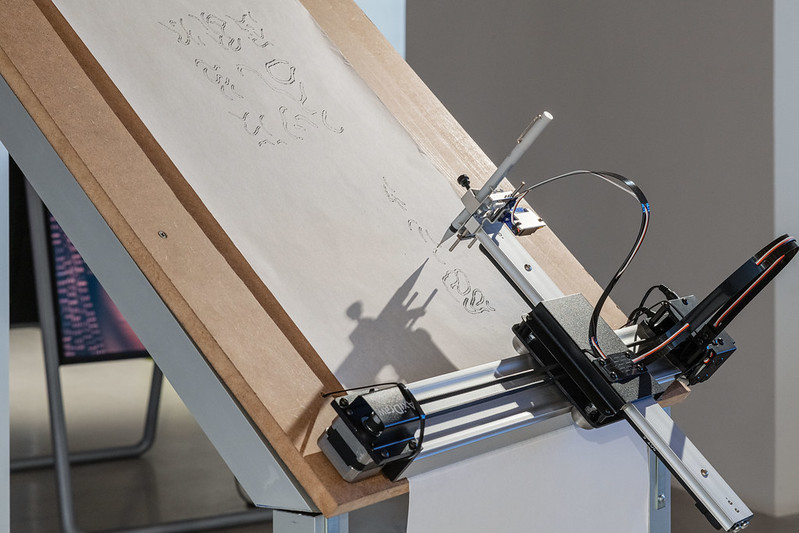
Kian Peng Ong, CLOUD SCRIPTS, 2024. Installation view Re:humanism 4 at Fondazione Pastificio Cerere, Roma. Photo: Carlo Romano. Courtesy Re:humanism 4
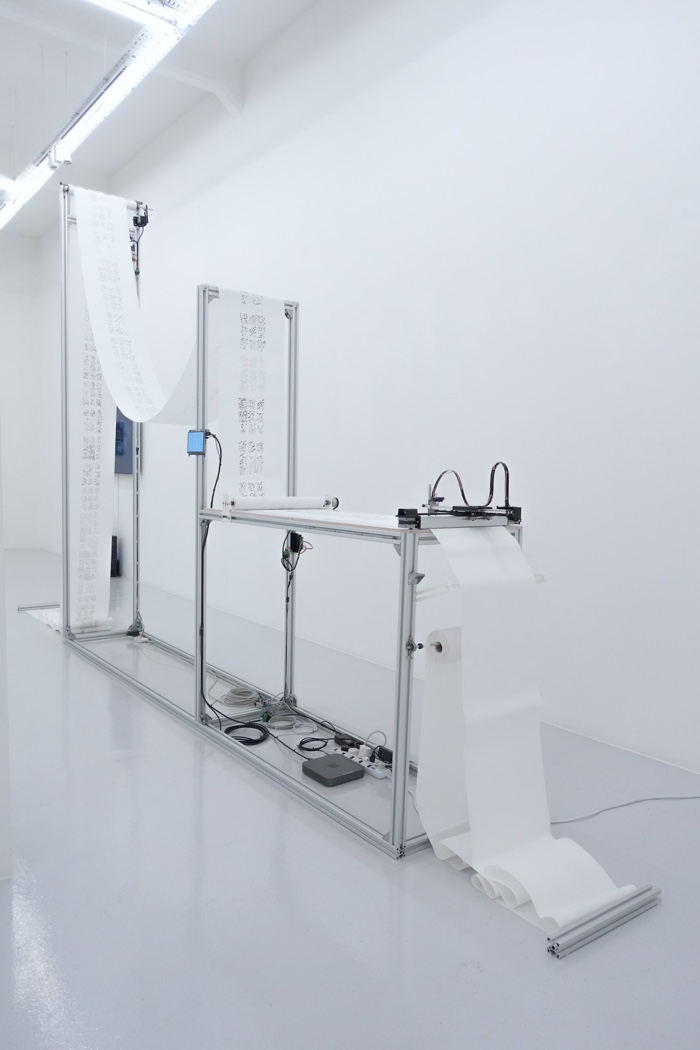
Kian Peng Ong, CLOUD SCRIPTS, 2024
In Two Texts on Technology: The Ideal of Technology, Technology and the New Culture, Japanese philosopher Kiyoshi Miki calls for a reclamation of Eastern technological traditions, rooted in the cultivation of humanity and spirit, as a form of resistance to the alienating effects of modern technology. The text was a source of inspiration for Ong Kian Peng who started wondering, Can machines serve as mediators between humans and the spiritual world?
His attempt at an answer is an ‘invocation machine’ called CLOUD SCRIPT. The installation uses ‘Cloud Seals’ extracted from Daoist scriptures to train a Gen Ai model. Rooted in Shamanistic practices from the pre-Han period, Daoist Cloud Seals draw inspiration from cloud formations believed to embody the movements of spirits.
The generative art installation generates a series of talismans that are devoid of specific pictorial meaning, but symbolises the artist’s desire to engage in a dialogue with the spiritual world.
More works and images from TIMELINE SHIFT – The exhibition of the winners of Re:humanism Art Prize 4:
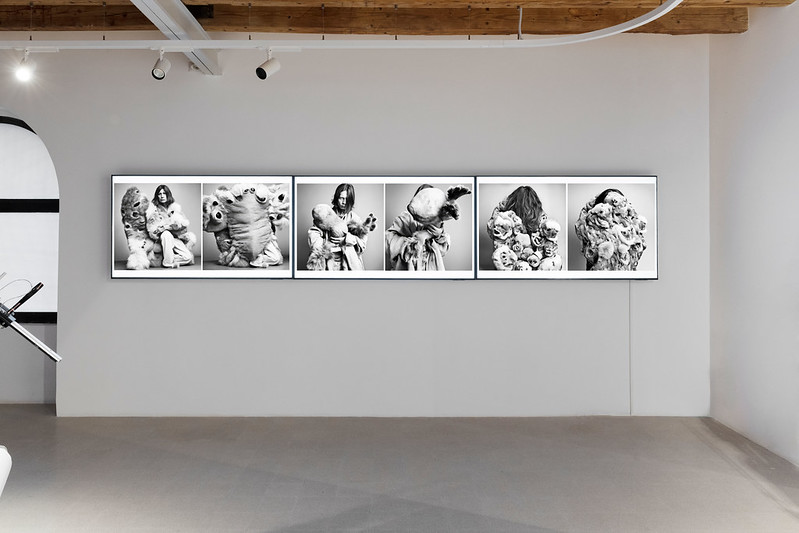
Esther Hunziker, Screen Tests, 2025. Installation view Re:humanism 4 at Fondazione Pastificio Cerere, Roma. Photo: Carlo Romano. Courtesy Re:humanism 4
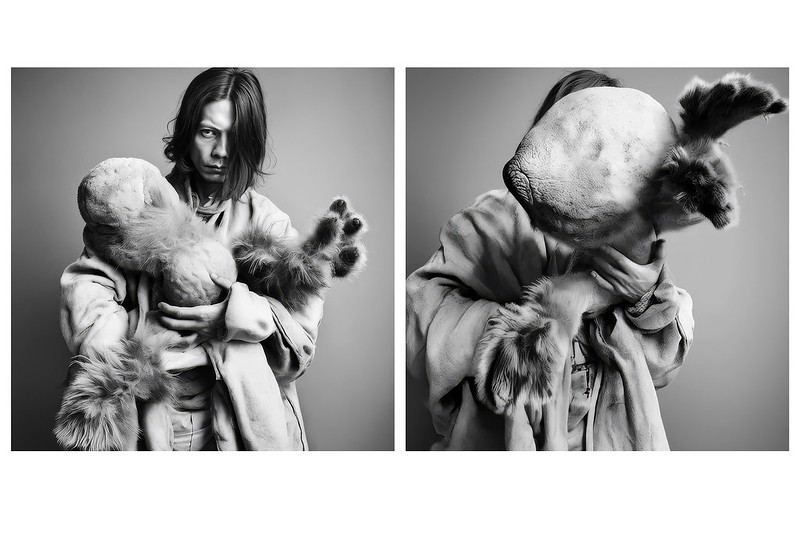 Esther Hunziker, Screen Tests, 2025
Esther Hunziker, Screen Tests, 2025
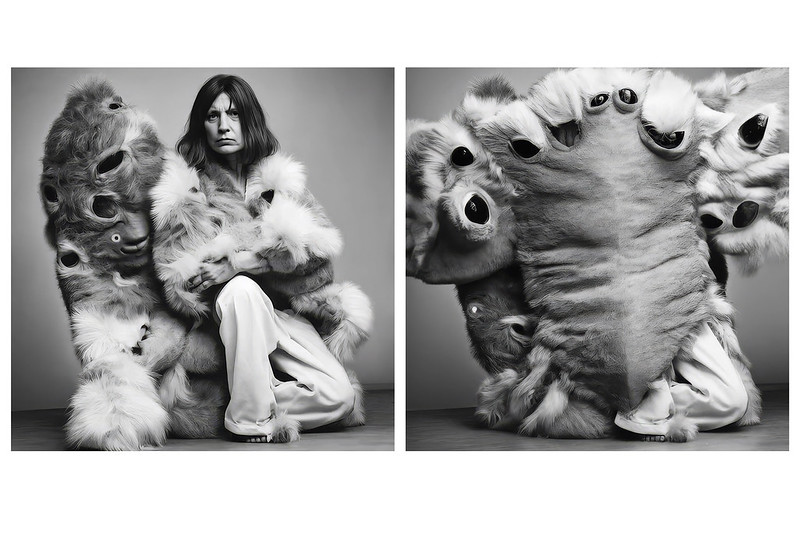 Esther Hunziker, Screen Tests, 2025
Esther Hunziker, Screen Tests, 2025

Franz Rosati, DATALAKE: CONTINGENCY, 2025
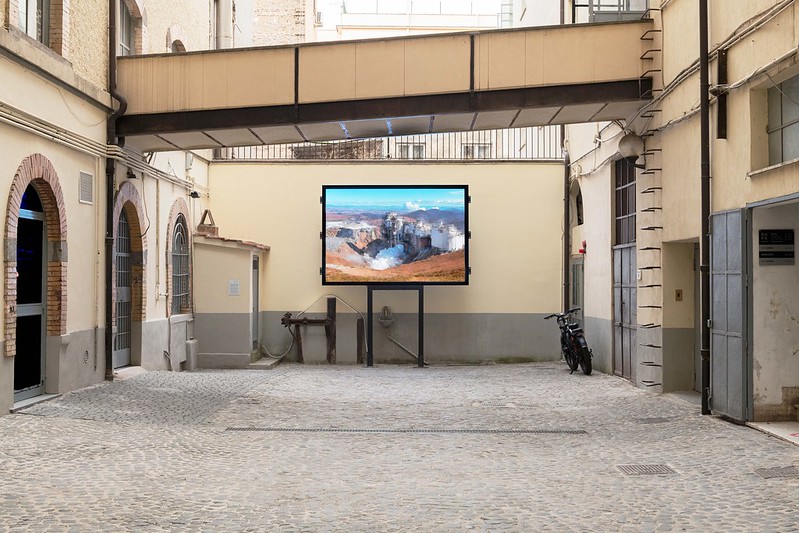
Franz Rosati, DATALAKE: CONTINGENCY, 2025. Installation view Re:humanism 4 at Fondazione Pastificio Cerere, Roma. Photo: Carlo Romano. Courtesy Re:humanism 4
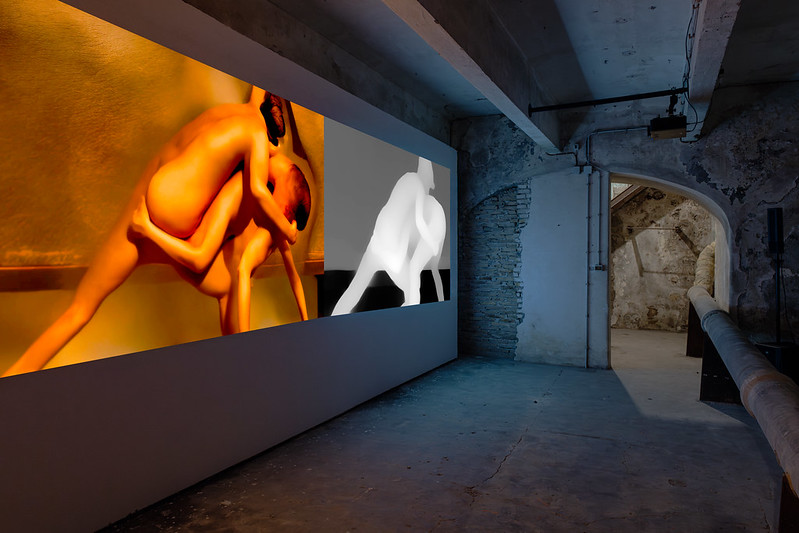
Adam Cole & Gregor Petrikovič, Me vs. You, 2025. Installation view Re:humanism 4 at Fondazione Pastificio Cerere, Roma. Photo: Carlo Romano. Courtesy Re:humanism 4
